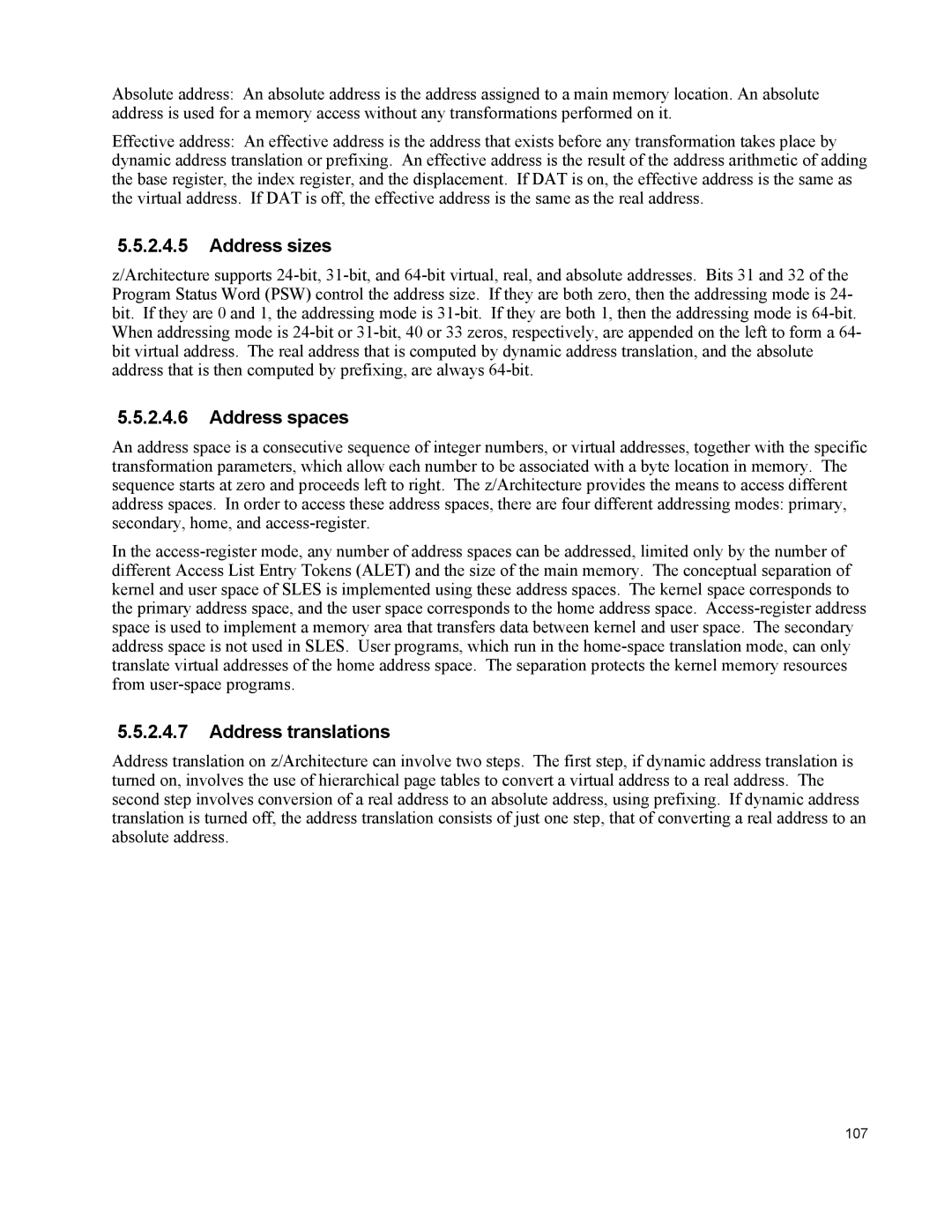Absolute address: An absolute address is the address assigned to a main memory location. An absolute address is used for a memory access without any transformations performed on it.
Effective address: An effective address is the address that exists before any transformation takes place by dynamic address translation or prefixing. An effective address is the result of the address arithmetic of adding the base register, the index register, and the displacement. If DAT is on, the effective address is the same as the virtual address. If DAT is off, the effective address is the same as the real address.
5.5.2.4.5Address sizes
z/Architecture supports
5.5.2.4.6Address spaces
An address space is a consecutive sequence of integer numbers, or virtual addresses, together with the specific transformation parameters, which allow each number to be associated with a byte location in memory. The sequence starts at zero and proceeds left to right. The z/Architecture provides the means to access different address spaces. In order to access these address spaces, there are four different addressing modes: primary, secondary, home, and
In the
5.5.2.4.7Address translations
Address translation on z/Architecture can involve two steps. The first step, if dynamic address translation is turned on, involves the use of hierarchical page tables to convert a virtual address to a real address. The second step involves conversion of a real address to an absolute address, using prefixing. If dynamic address translation is turned off, the address translation consists of just one step, that of converting a real address to an absolute address.
107
